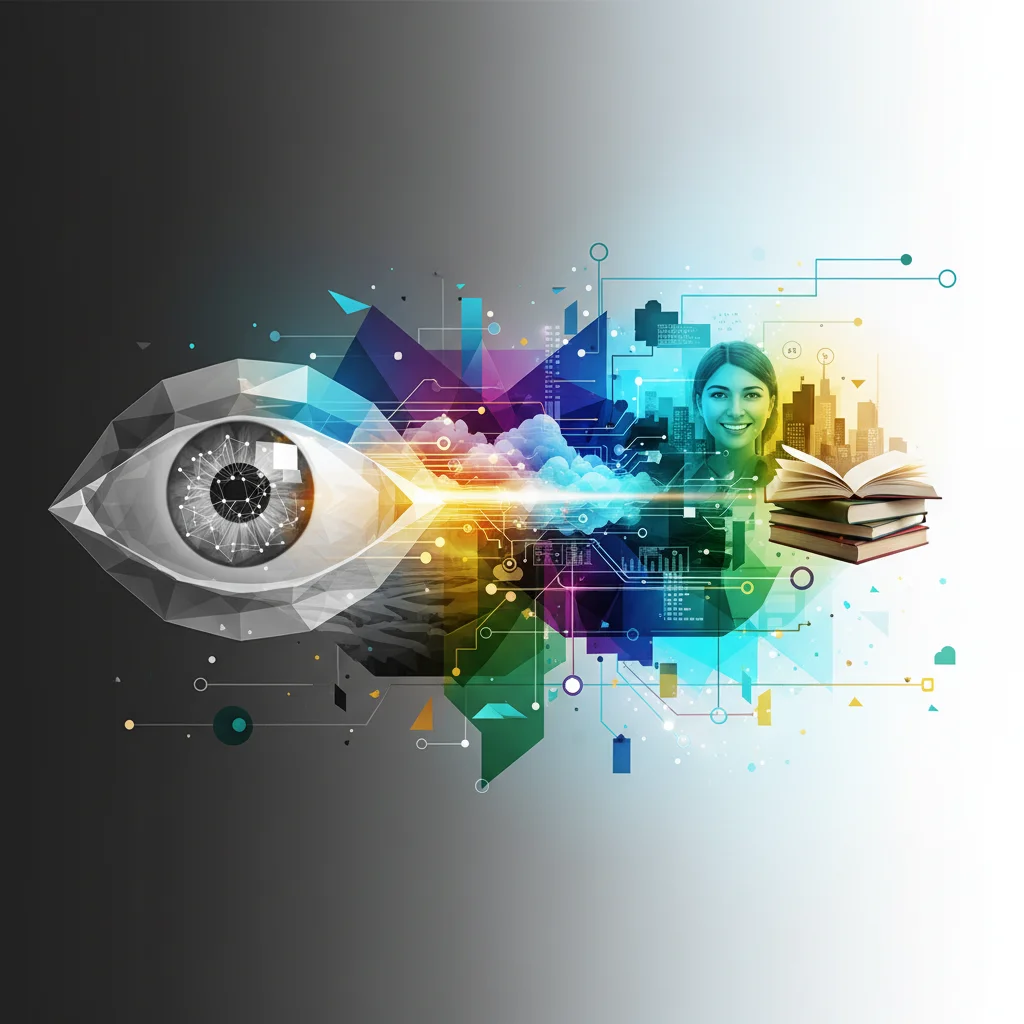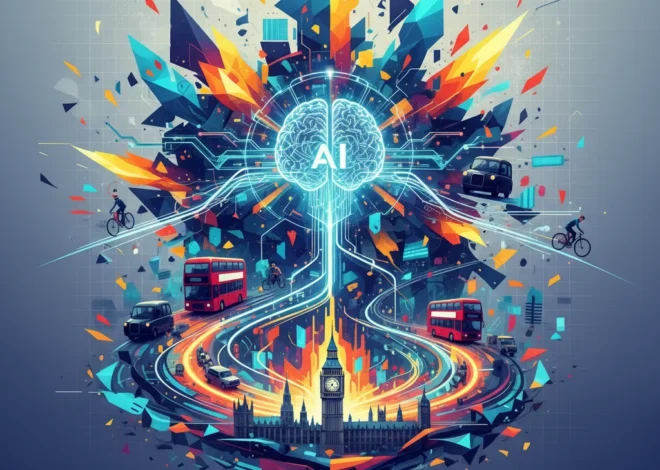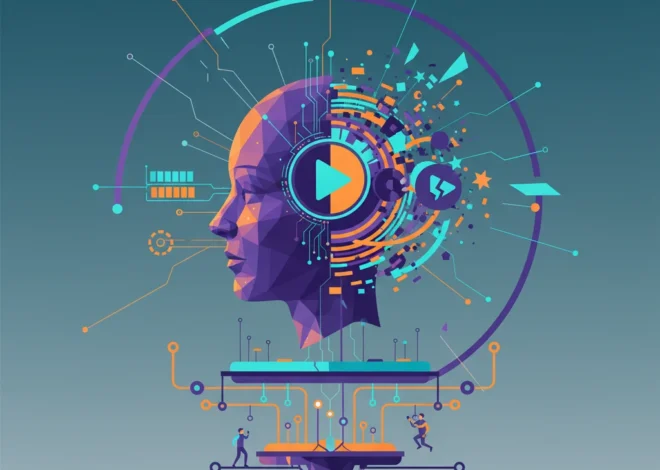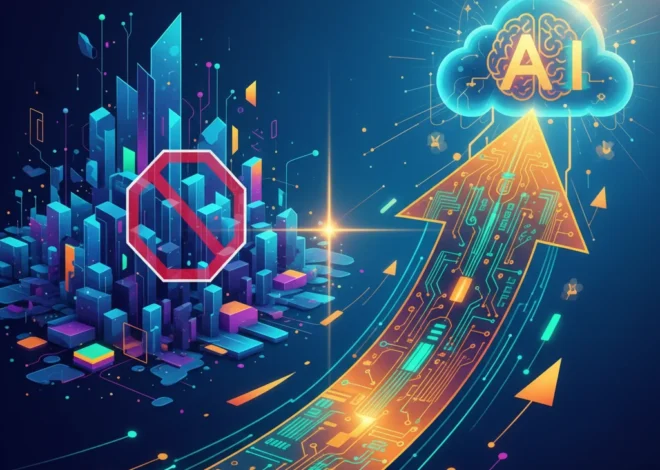
The Software That Sees: How AI and a New Eye Implant Are Defeating Blindness
Imagine a world fading to gray, the faces of loved ones blurring into indistinct shapes, the simple joy of reading a book becoming an impossible task. This is the reality for millions suffering from advanced macular degeneration, a leading cause of blindness. But what if we could write code that restores sight? What if a combination of silicon, software, and artificial intelligence could bypass a broken biological system and plug directly into the brain? This isn’t science fiction. This is the new frontier of medical innovation, and it’s happening right now.
A groundbreaking development is rewriting the narrative for those with geographic atrophy, the advanced form of age-related macular degeneration (AMD). Scientists and engineers have created a tiny, sophisticated eye implant that, when paired with intelligent glasses, has allowed patients who have been blind for years to see again. This isn’t just a story about a clever medical device; it’s a story about the convergence of hardware, sophisticated software, and the incredible potential of AI to solve some of humanity’s most profound challenges. For developers, entrepreneurs, and tech professionals, this breakthrough is a powerful signal of where the future is headed: a world where biology and technology merge, powered by code.
The Biological Challenge: When the Eye’s “Sensor” Fails
To appreciate the sheer brilliance of this innovation, we first need to understand the problem it solves. Think of your eye as a high-end digital camera. The lens focuses light, and the retina at the back of the eye acts as the image sensor. The macula is the central, most sensitive part of this sensor, responsible for sharp, detailed, color vision—the kind you need to read, drive, or recognize a face. It’s packed with light-sensitive cells called photoreceptors.
In advanced “dry” AMD, these crucial photoreceptor cells die off. The “camera” still works, the “lens” still focuses light, but the “sensor” is broken. The optic nerve—the “cable” to the brain—is still perfectly functional, but it receives no signal. Globally, it’s estimated that up to 200 million people live with AMD, making it a massive and growing public health issue. For years, the advanced stages of this disease were considered an irreversible path to blindness.
The Price of 'Free': Why Meta's Italian Lawsuit is a Wake-Up Call for the AI-Powered World
The Engineering of Sight: A Three-Part Symphony of Technology
The system, developed by French company Pixium Vision, is called the Prima System. It brilliantly sidesteps the damaged photoreceptors by creating an entirely new pathway for visual information. It consists of three core components working in harmony:
- The “Smart” Glasses: These aren’t your average spectacles. Embedded within the frame is a mini-camera that captures the world as the user sees it. But it does more than just see; it also houses a sophisticated pocket-sized computer. This processor is the brains of the operation.
- The AI-Powered Processor: This is where the magic truly happens for the tech-minded. The processor takes the video feed from the camera and, using advanced algorithms, transforms it into a simplified, high-contrast image. It then converts this visual data into precisely timed infrared light pulses. This step is a monumental feat of programming and real-time data processing.
- The Photovoltaic Implant: A tiny, 2-millimeter wide chip is surgically placed beneath the retina. This chip contains 378 electrodes. When the infrared pulses from the glasses hit this implant, it converts the light back into electrical signals, just like a solar panel. These electrical signals then directly stimulate the still-healthy nerve cells behind the damaged photoreceptor layer, sending the visual information down the optic nerve to the brain.
In essence, the system replaces the function of the dead cells with an end-to-end technological pipeline. The results have been life-changing. In a European trial, an 88-year-old patient was able to read letters on a screen for the first time in five years. This isn’t just a flicker of light; it’s the restoration of functional sight.
The Ghost in the Machine: Why AI and Software Are the Real Heroes
While the hardware is a marvel of miniaturization, the true potential for future growth and innovation lies in the software and the artificial intelligence that powers the processor. The implant itself is a fixed piece of hardware, but the software that interprets the world for it can be endlessly updated and improved.
Machine Learning for a Smarter Gaze: The processor isn’t just dumbly converting pixels to electrical pulses. It’s using computer vision and machine learning models to make intelligent decisions. It can be trained to recognize important features like edges, doorways, faces, or text and enhance them, filtering out visual “noise.” This is a complex programming task that requires real-time, low-latency performance. Future versions could use AI to automatically adjust brightness and contrast based on the environment, or even identify objects and whisper them to the user via a bone-conduction speaker in the glasses.
A SaaS Model for Vision? This opens up fascinating possibilities for startups and entrepreneurs. Imagine a future where the performance of your bionic eye could be upgraded via a software update. New algorithms could be developed and deployed from the cloud, offering improved night vision, color processing, or facial recognition. This could evolve into a SaaS (Software as a Service) model for human augmentation, where users subscribe to the latest “vision OS.”
The Critical Importance of Cybersecurity: Of course, a device that connects a computer to the human nervous system raises immediate and serious cybersecurity concerns. What happens if a neural implant is hacked? The potential for malicious actors to disrupt or manipulate a person’s perception is terrifying. Building robust, unbreachable security protocols isn’t just a feature; it’s a fundamental ethical requirement for this entire field of technology. This is a challenge and an opportunity for cybersecurity experts to pioneer a new field: neuro-cybersecurity.
The Algorithm on Trial: Why Big Tech's Italian Lawsuit is a Wake-Up Call for All Developers
Entrepreneurs and startups should be thinking beyond the immediate medical application. What other senses could be restored or even enhanced this way? What new business models emerge when hardware is implanted but the value is delivered via cloud-connected software? This also forces us to confront profound ethical questions. Where do we draw the line between restoration and enhancement? Who owns the data that flows from a person’s optic nerve to a cloud server? As we celebrate this incredible innovation, we must also be the ones to build the ethical and security frameworks to ensure it benefits humanity safely. The next wave of tech unicorns won’t just be building apps; they’ll be building responsible, secure, and life-changing interfaces to the human body.
The Evolution of Bionic Sight
The Prima System represents a significant leap forward in a field that has been progressing for decades. To understand its innovation, it’s helpful to compare it to previous technologies and look toward the future.
Here’s a simplified comparison of different approaches to restoring vision:
| Technology Generation | Example System | How It Works | Key Advantage / Disadvantage |
|---|---|---|---|
| 1st Gen (Epiretinal) | Argus II (“Bionic Eye”) | An implant sits on top of the retina, stimulating it with a grid of electrodes. Requires an external camera and processor. | Advantage: Pioneered the field. Disadvantage: Invasive surgery, very low resolution (e.g., 60 pixels), required patients to learn to interpret abstract flashes of light. |
| 2nd Gen (Subretinal) | Pixium Vision Prima System | A tiny, wireless implant sits underneath the retina, more closely mimicking the natural position of photoreceptors. | Advantage: Less invasive surgery, higher potential resolution (378 “pixels”), more intuitive for the brain to process. Disadvantage: Still provides a simplified version of sight, not full natural vision. |
| Future (Optogenetics / Brain Interface) | Conceptual / Research Phase | Uses gene therapy to make nerve cells light-sensitive, or bypasses the eye entirely to feed signals directly into the brain’s visual cortex. | Advantage: Potential for extremely high-resolution, natural-feeling vision. Disadvantage: Highly experimental, complex, and raises significant ethical questions. |
The Road Ahead: From Pixels to Perception
The journey for a patient using this device is remarkable. It requires the brain to adapt and learn a new visual language. Initially, they perceive flashes of light, but over time and with rehabilitation, the brain’s incredible plasticity allows it to translate these patterns into meaningful shapes and objects. The success of this technology is as much a testament to neuroplasticity as it is to engineering.
The innovation doesn’t stop here. The use of photovoltaic cells in the implant is a key breakthrough, as it removes the need for complex wiring and power sources inside the eye, a major hurdle for older designs. As chip technology advances, we can expect future implants to contain thousands, or even tens of thousands, of electrodes, pushing the resolution closer and closer to natural sight. The real-time processing will be further enhanced by more powerful, efficient AI chips, enabling more sophisticated image interpretation and a more seamless experience.
Digital Reckoning: Why an Italian Lawsuit Could Redefine Big Tech's AI Playbook
This is a story of hope. It demonstrates that with bold thinking and interdisciplinary collaboration—linking ophthalmologists, electrical engineers, AI developers, and cybersecurity experts—we can solve problems once thought unsolvable. For the millions of people living in a world of shadows, a light has been switched on. And for the tech world, a clear signal has been sent: the next frontier of software, cloud computing, and AI isn’t just on our screens; it’s within ourselves.


